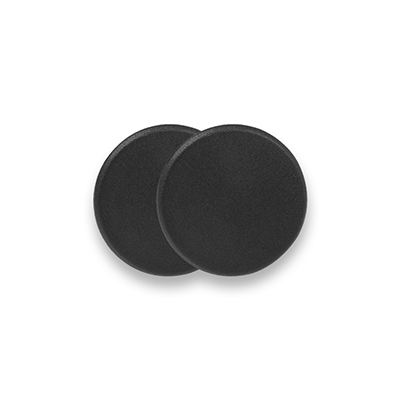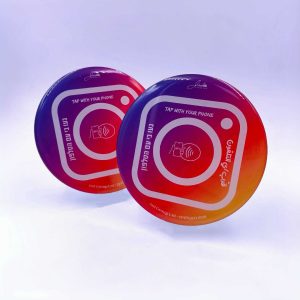In the dynamic landscape of the food industry, RFID technology has emerged as the unrivaled solution for efficiently managing raw materials and finished products. This transformative technology, surpassing traditional barcode systems, has revolutionized the handling of manufactured food and materials. As we explore the ways in which RFID tags are reshaping the food industry, it becomes evident that this technology is a cornerstone for innovation and enhanced operational capabilities.
Understanding the Components of RFID Systems
1. RFID Tag:
An RFID tag, also referred to as a transporter or carrier, is a compact device affixed to objects for tracking and identification. Noteworthy is the evolution of passive tags, which draw power from the reader’s signal. These tags transmit essential data such as product and manufacturer details, showcasing RFID’s ability to convey information without a direct line of sight.
2. Antenna:
The antenna serves as a conductive link between the RFID tag and reader. Both components possess antennas facilitating seamless communication, exemplifying the symbiotic relationship crucial for effective RFID systems.
3. Software:
Integral to the RFID system is software that harnesses transmitted tag information. Users leverage this data to make informed business decisions, underscoring RFID’s role in facilitating actionable insights.
5 Ways RFID Technology Transforms the Food Industry
1. Supply Chain Management:
RFID tags play a pivotal role in supply chain management, offering unparalleled tracking capabilities during distribution and storage. Overcoming limitations of barcodes, RFID systems operate without a line of sight, cover a larger range, interact with multiple tags simultaneously, and store extensive data. Food manufacturers deploy RFID to trace products with precision, providing consumers with post-purchase access to a product’s entire history for enhanced satisfaction.
2. Temperature Monitoring:
RFID-based systems excel in monitoring the shelf life of food products. Tags equipped with temperature-sensing capabilities integrate data over time, determining the product’s shelf life. RFID-based temperature data loggers, with expansive memory capacities, ensure accurate monitoring during food processing, further enhancing food safety measures.
3. Food Safety:
Widely embraced in the food industry, RFID systems assure the safe transportation and storage of products like dairy, fruit, meat, and bread. Acting as temperature data loggers and supply-chain tracking tools, RFID tags ensure adherence to safe temperature ranges, contributing to elevated food safety standards.
4. Traceability and Waste Reduction:
Meeting consumer demands for transparency, RFID tags store vital information about food sources and processes. This data, encompassing type, quantity, and origin, aids in traceability throughout a product’s life cycle. The meticulous information retrieval capability proves invaluable in addressing concerns related to food waste, aligning with contemporary needs for sustainable practices.
5. Customer Satisfaction:
The implementation of RFID tags introduces a paradigm shift, offering consumers a comprehensive view of a product’s journey. Accessible food history engenders trust among consumers, leading to a more positive customer experience. By showcasing transparency and accountability, RFID contributes not only to customer satisfaction but also to increased revenue for companies.
Embracing Innovation in the Food Industry
As RFID technology continues to permeate the food industry, its multifaceted applications redefine operational efficiency, safety standards, and consumer engagement. The marriage of RFID with food industry practices not only addresses current challenges but also propels the sector toward sustainable and customer-centric solutions. In this era of technological evolution, RFID stands as a beacon, guiding the food industry into a future of heightened efficiency and consumer satisfaction.
Do food items have RFID tags?
Yes, RFID tags are used in the food industry for better handling of raw materials and finished products. Traditionally, barcodes have been used to give an identification of an individual product. RFID technology has been evolved drastically and now considered to be the advanced technology that has been recently used to pace the handling of manufactured food and materials. RFID technologies use radiofrequency waves to identify an object. RFID is capable identify an object from a distance without requiring a line of sight. RFID tags can also incorporate additional data which can be fetched easily details such as product name and manufacturer name. RFID can also transmit measured environmental factors such as temperature and relative humidity. RFID tags are used in the food industry for supply chain management, temperature monitoring of foods, and ensuring food safety, traceability & reduce food waste and customer satisfaction .
How does RFID technology help in reducing food waste?
RFID technology can help reduce food waste in several ways. Firstly, RFID tags can be used to monitor the temperature of food products, which is important for ensuring that food is stored and transported at the correct temperature. This can help to prevent spoilage and reduce food waste. Secondly, RFID tags can be used to track the movement of food products through the supply chain, which can help to improve the efficiency of the supply chain and reduce costs. Thirdly, RFID tags can be used to provide consumers with information about the origin of the food product, which can help to increase customer satisfaction. Finally, RFID tags can be used to reduce food waste by ensuring that short sell-by dates can be easily and quickly identified and the products brought forward and sold well within those dates. According to a study by Avery Dennison, RFID tagging can help keep consumers safe and prevent significant volumes of food from being discarded, with a potential food waste reduction of as much as 20 percent .
What are the different types of RFID tags used for food items?
There are several types of RFID tags used in the food industry. RFID tags can be used to track the movement of food products through the supply chain, monitor the temperature of food products, and provide consumers with information about the origin of the food product. Here are some of the most commonly used RFID tags in the food industry:
Passive RFID tags: These tags do not have a power source and derive power from the signal received from the reader. They are used for tracking food products during distribution and storage to prevent spoilage and reduce food waste .
Active RFID tags: These tags have their own power source and can transmit data over long distances. They are used for tracking food products during transportation and storage .
Semi-passive RFID tags: These tags have a battery to power the tag’s circuitry, but the battery does not power the transmission of data. They are used for monitoring the temperature of food products .
RFID technology has been widely used by food manufacturers to trace food products along with the supply chain with great accuracy. Customers can find the entire history of the food product after purchase by entering an alphanumeric code on a website, this gives them assurance and great customer satisfaction .
Does McDonald’s use RFID?
Yes, McDonald’s uses RFID technology in some of its restaurants. For example, McDonald’s France has partnered with Checkpoint Systems to install RFID hardware and software in over 1,200 of its restaurants to monitor the real-time visibility of its reusable tableware stock, enabling swift and efficient inventory management, optimizing restocking and safeguarding the restaurant’s inventory for future security and usability . The RFID tags used in this case are food-safe, heat and water-resistant, and suitable for all reusable containers, from cups and bottles to french fry trays . McDonald’s has also been planning to adopt RFID technology for collecting, cleaning, and redistributing plastic coffee cups . However, it is unclear whether McDonald’s uses RFID tags on food products themselves.
















